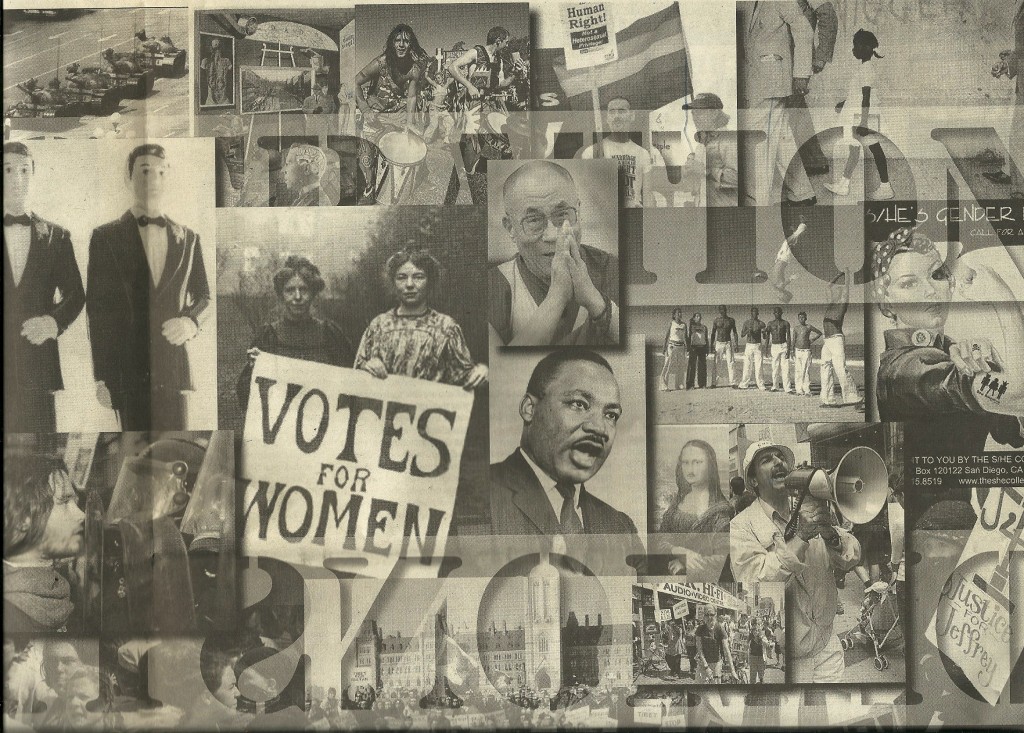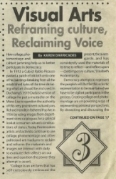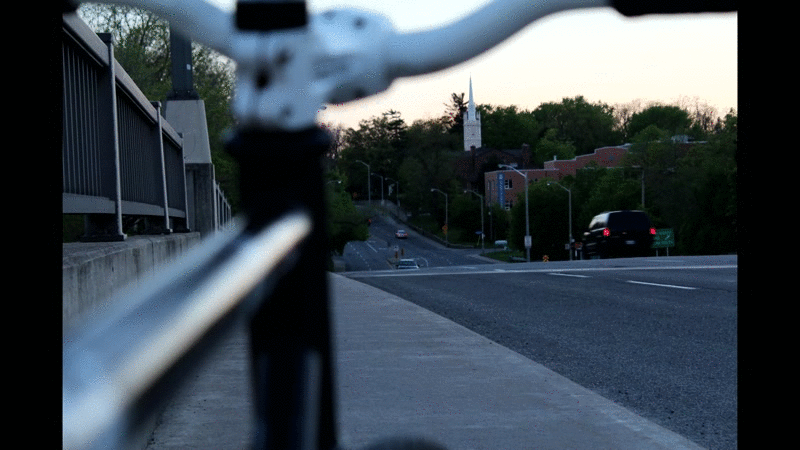Being Mentored by Theatre Direct
In early 2006 I was a recent art school graduate looking for work in my "field", perusing job sites I found a call for visual artists to lead workshops with large numbers of high school students on a field trip to watch a Theatre Direct play called The Demonstration – a kinetic meditation of democracy. I had never done anything like that before, but then again I had done all kinds of things I had never done before in the 2 years since graduating and trying to figure out how to put my arts degree to work, so I thought: Why not apply? I remember painstaking all night about how to engage 90 students in making visual art about concepts of democracy, after having sat through a play on the same subject?! I kept imagining bored teenagers saying “but I can’t _________” (insert alienating art medium of your choice). What kind of art form is inclusive and invites/ harnesses, hell even requires, constant criticism on behalf of its creators? The answer: culture jamming using collage concepts. Confronting taboos, talking-back to stale and pedantic messages, rearranging space and taking the power back from mass-media, from the powers that be, from the rule-makers. In a word: collage-mocracy.
A pitch was submitted and Never Gallery Ready was born, in almost exactly the form it remains today, 9 years later.
Over the course of the project I met a brilliant cast of individuals, was included in a collaborative process that demonstrated the best of what education can mean and what can happen in a school-type setting. But most life-changing of all, I discovered I love working with young people, creating media with them, questioning everything with them and animating subject matter, art tools and activist tactics with them. Up to this point, I had run a small photo development lab, worked on a few film sets, exhibited some of my own artwork and worked in publishing, but this work fired me up in ways I had not experienced in the professional world of adults: I was hooked! I am super thankful to Theatre Directfor taking a chance on me, which was not an easy decision for them because I had zero experience at the time facilitating art making with young people. It was the beginning of the most fulfilling journey, and it all started here.
As much as my thinking about the work (and methods and projects) has expanded, this little article (below) still expresses what is at the core of my workshops and reading it 9 years later, I realize I am just as excited about this work today as I was then.
Reframing Culture, Reclaiming Voice
How collage, photo-montage and culture jamming help us to better participate in democracy.
In 1912 a Cubist Pablo Picasso pasted a patch of oilcloth onto one of his paintings breaking from all the established rules of the time dictating what art should be and use. In Duchamp’s 1919 Dadaist version of collage he put a mustache on the Mona Lisa to question the authority of this very prominent cultural icon. Richard Hamilton
fathered Pop art in 1956 by using images from department store catalogues for a satirical look at consumer culture‘s constructions of status. Today Postmodern artists and activists continue to use collage, photo-montage and other politicized art mediums to reclaim and reframe the materials and images we interact with daily to evaluate their affects on our lives and question the power they attempt to assert.
“Collage is an art form that has self-consciously embraced the present, the avant-garde, and has consistently used the materials of its time to reflect -- and reflect upon -- contemporary culture," Elisabeth Hodermarsky
Democracy attempts to represent the people’s will. But for this eclectic representation to be maintained we have to be vigilant participants in the process. Creating collage and photo-montage are empowering ways of representing personal perspectives. By dissecting and discussing the many voices of democracy we can better understand how many of our actions/interactions are political. This awareness in turn enables us to be more critically active participants in the shaping of democracy.
Picasso’s use of the oilcloth as art instead of art tool made artists realize they were not limited to art supply store materials and could just as easily go to the hardware store, night stand drawer or garbage bin for their inspiration. Using maps, branded packaging, student IDs, language, carbon paper, stamps, money, fabrics, advertisements, images from history, science, art, war, religion, pop culture, and many more materials, including much of the contents of our pockets and bags, this workshop will empower those attending to realize that we all become artists and activists when we decide to look closer at the issues and elements that affect our lives. Collage raises many questions, and offers few answers. Collage creates dialogue in the place of monologue. Collage enables us to take back the power of images by giving equal importance and interest to a picture of a loved as to a picture of J.Lo.
Political posturing and culture jamming work in similar ways to collage and photo-montage using the tools of the advertiser to subvert the authority of its message and reveal truths the company behind the advertisement would prefer the viewer didn’t know. The term culture jamming comes from radio frequency jamming used by people living under oppressive government regimes that deny their citizens a voice in the political structure that affect their lives. Contemporary culture jammers believe that corporate media saturation is a similarly oppressive force from which the power must be taken back and placed into to the hands of the people.
Collage is subversive, resourceful, ingenious, underground, defiant, critical, cutting edge, radical, fantastical, anti-elitist art that protests against conventions. Collage has no rules and excludes no one. Collage can be funny, serious, absurd, epic, alien, angry, emotional, random and uplifting. Cut and paste and pass it on!










Works of collage that use visual metaphor and puns; reflect lived-experiences; express individuality and share stories of personal growth and vision.